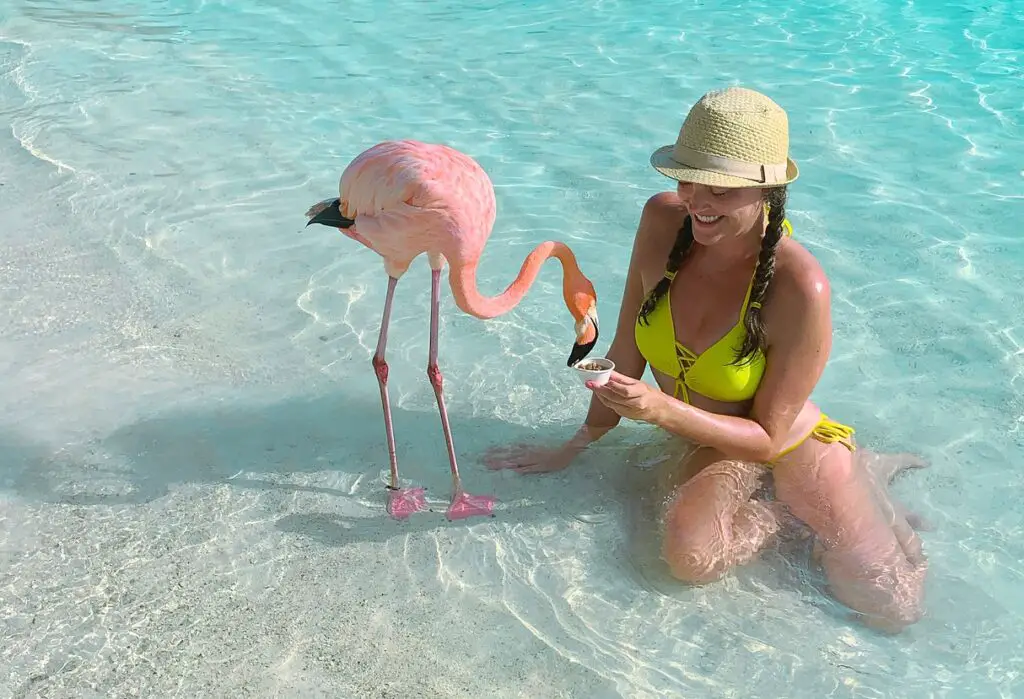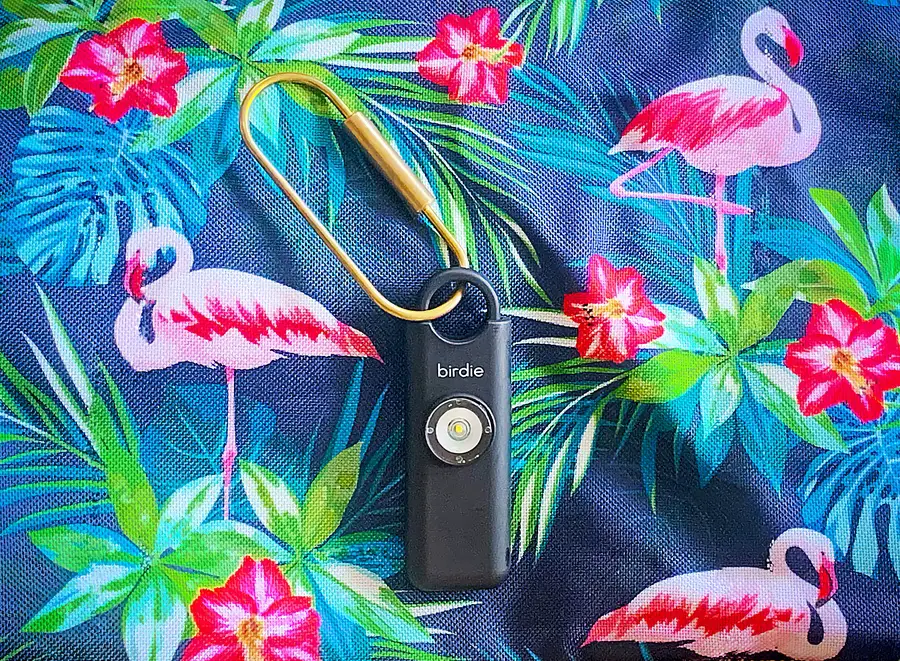THE ULTIMATE ARUBA TRAVEL GUIDE: ESCAPE TO “ONE HAPPY ISLAND”
Snapshot
With turquoise-colored waters, white-sand beaches, pastel Dutch-style buildings, gorgeous weather, and a fantastic food scene, Aruba is a tropical paradise that lives up to its nickname “One Happy Island.”
Visiting Aruba is a breeze because English is widely spoken and it’s easy to get around the island. Therefore, it’s no surprise that Aruba has the highest repeat visitor rate of any Caribbean island!
If you’re planning your escape to Aruba, you’ve come to the right place. My Ultimate Aruba Travel Guide will have you inspired and ready for your Aruban getaway in no time!
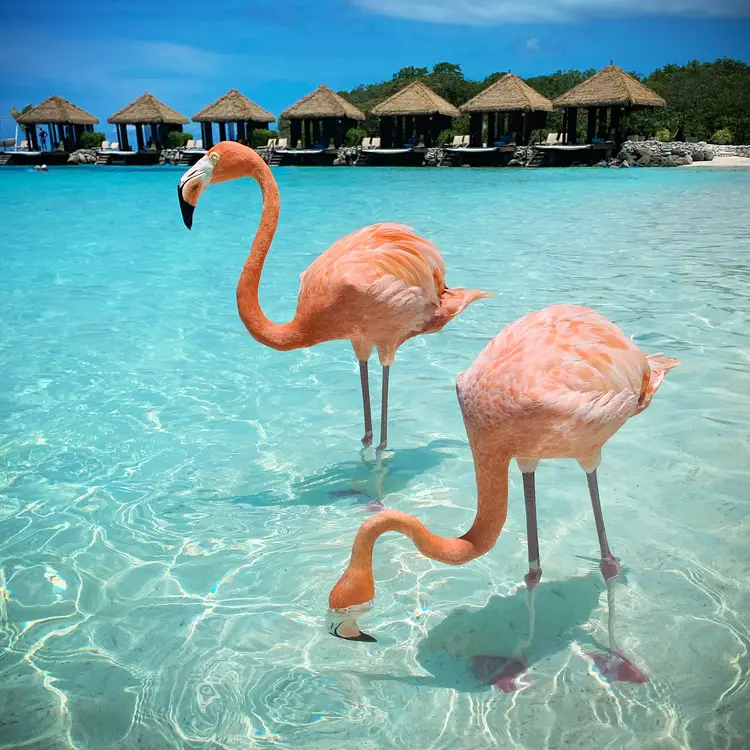
Table of Contents
Why Visit Aruba?
1. Breathtaking Beaches and Turquoise-Colored Water
Aruba is famous for its gorgeous beaches—including the world-famous Eagle Beach—and crystal clear, turquoise-colored water. If you’re looking to escape the hustle and bustle of everyday life and do nothing but relax on the beach with your toes in the sand, Aruba is the place for you!
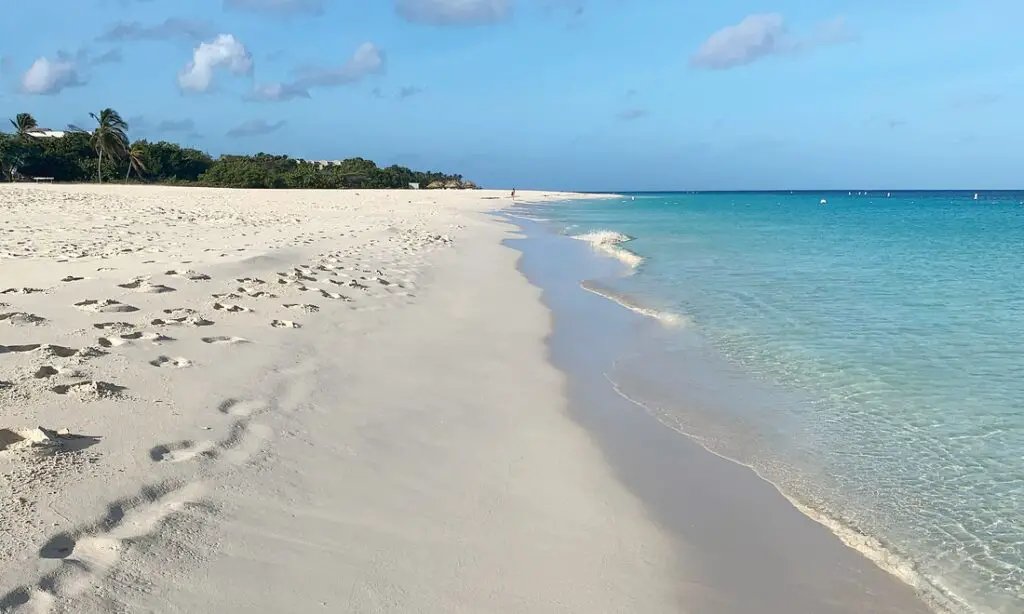
But Aruba also offers a wide variety of water-related activities to enjoy when you want to get active—including scuba diving, snorkeling, sea kayaking, stand-up paddle-boarding, paddle-board yoga classes, windsurfing, and kiteboarding.
Whether your ideal tropical getaway involves getting active in the water, just relaxing on the beach, or a combination of both, Aruba is the perfect Caribbean destination.
2. A Tropical Desert Paradise
Aruba is not your typical Caribbean island though. In contrast to the rainforest-like vegetation characteristic of many Caribbean islands, Aruba boasts a striking desert-like landscape dotted with cacti, windswept Divi Divi trees, prehistoric-looking rock formations reminiscent of a Flintstones cartoon, and wild terrain that’s perfect for off-roading.
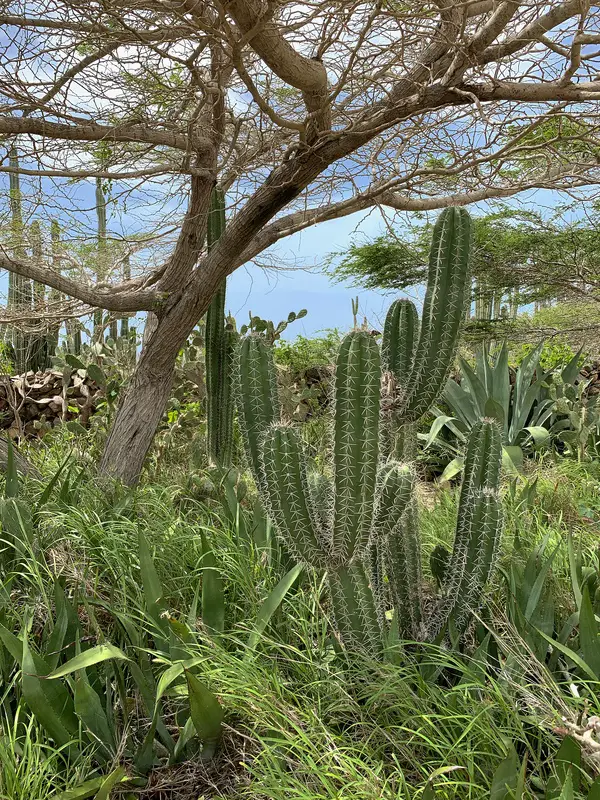
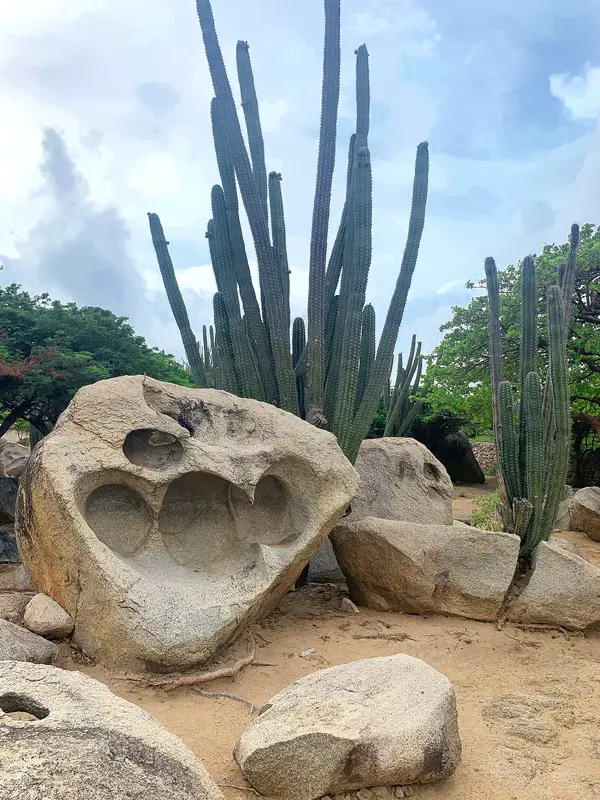
Feeling adventurous? Hop in a 4×4 vehicle and explore Aruba’s Arikok National Park as you traverse rocky terrain to discover remote beaches, fascinating caves, and hidden natural pools!
3. A Fantastic Food Scene
Aruba is a foodie’s paradise! The island has incredible restaurants offering a wide variety of international cuisines. But the best part of Aruba’s food scene is the local Aruban cuisine, which integrates a unique, flavorful blend of Dutch and Caribbean influences.

Oh, and did I mention that Aruba has on-the-beach restaurants where you can eat with your toes in the sand (or even in the water itself) while watching the sunset? Incredible!
4. Low Risk of Hurricanes in Aruba
There’s always a risk of encountering bad weather when traveling to the Caribbean during hurricane season. However, some parts of the Caribbean—like Aruba—have historically experienced less hurricane activity than others.
Aruba sits on the southern fringe of the Caribbean hurricane belt. So although Aruba does experience some tropical weather, hurricanes rarely hit Aruba. If you’re interested in a Caribbean getaway during hurricane season, Aruba is one of your safest bets!
Basic Information About Aruba
- Capital: Oranjestad
- Location: Aruba is an island located in the southern Caribbean, approximately 15 miles off the coast of Venezuela.
- Size: Aruba is 20 miles (32 km) long and 6 miles (10 km) wide. It has an area of 69.5 square miles (180 sq. km).
- Driving: Drive on the right side of the road (as in the U.S.).
- Drinking Water: The tap water in Aruba is desalinated seawater, which is safe to drink and tastes great!
- Time Zone: Aruba is in the Atlantic Standard Time (AST) Zone, four hours behind UTC/GMT.
- Daylight Saving Time: Daylight Saving Time is not observed in Aruba. (Note: The time is the same in Aruba and on the East Coast of the United States, except when the United States is observing Daylight Saving Time.)
- Government: Aruba is a parliamentary democracy. It is part of the Kingdom of the Netherlands.
- Electrical Voltage: 120 volts, 60 Hz (as in the U.S.)
- Electrical Plugs: Types A & B (as in the U.S.), Type F
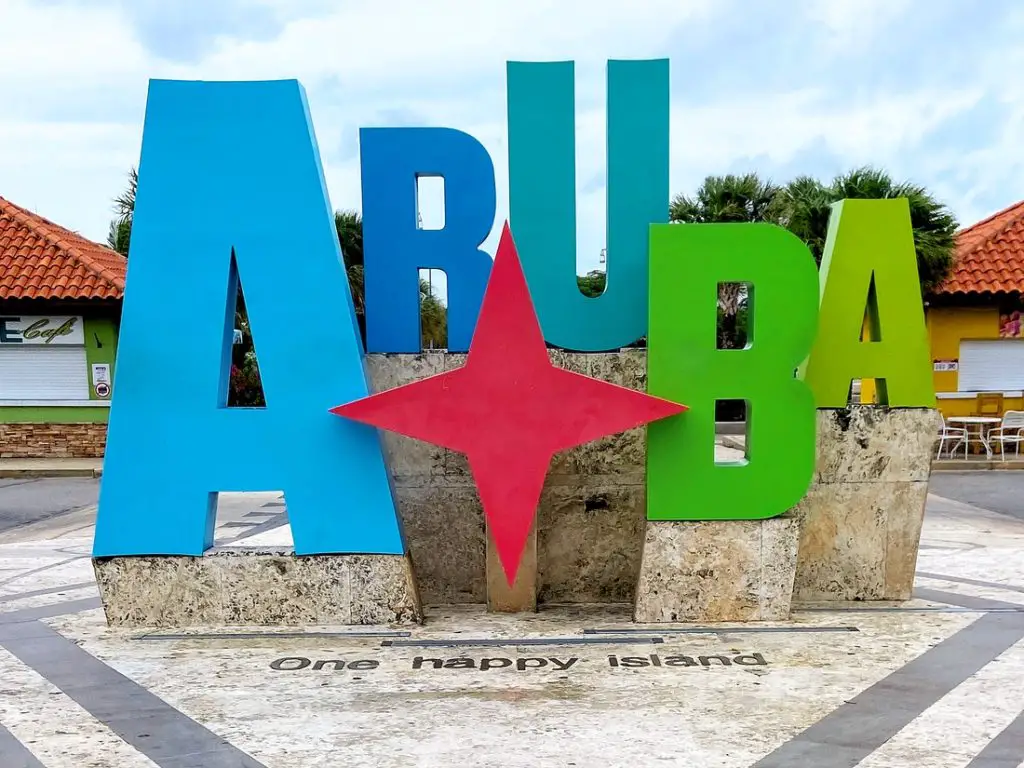
Visiting Aruba During the COVID-19 Pandemic
Requirements for Traveling to Aruba During the COVID-19 Pandemic
Apply for the “Aruba ED Card“
Visitors (including children) must complete the online Embarkation/Disembarkation card (“ED Card”) process and be approved in order to enter Aruba. For information about how to apply for the Aruba ED Card, visit the Aruba Online ED Card webpage.
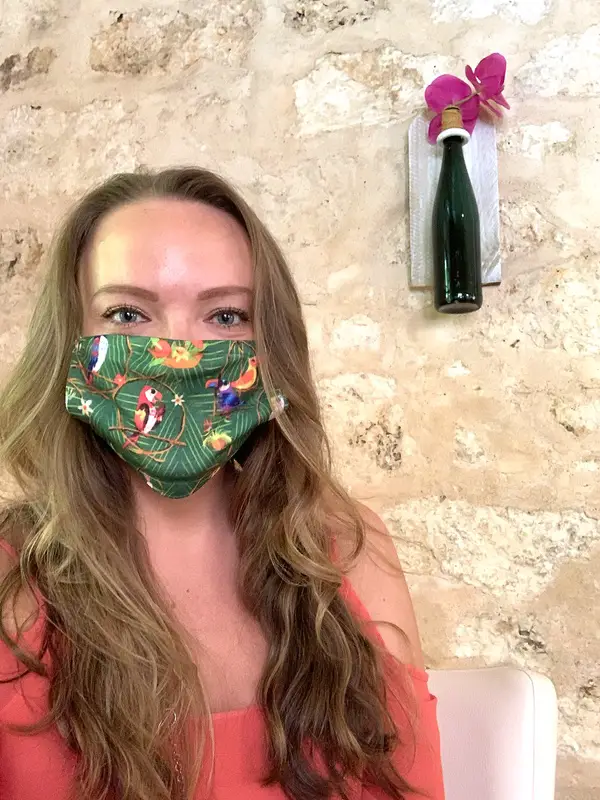
Languages in Aruba
Arubans are multi-lingual. Aruba’s official languages are Dutch and Papiamento (a unique creole language that has evolved to incorporate Dutch, French, Spanish, Portuguese, and English words).
In addition to Dutch and Papiamento, Arubans also speak Spanish and English. Because English is widely spoken in Aruba, English-speaking travelers should have no trouble communicating with locals.
Currency in Aruba
Aruban Florins and U.S. Dollars
Aruba’s official currency is the Aruban florin, but the U.S. dollar is also widely accepted in Aruba. In fact, stores and restaurants often display prices in U.S. dollars. If you pay with U.S. dollars, you may receive your change in either U.S. dollars or Aruban florins.
To see the current exchange rates between the Aruban florin and other types of currency, click here or download the XE Currency Conversion app to your phone for free!
Paying with Credit Cards and Cash in Aruba
In general, credit cards are widely accepted in Aruba. However, some establishments require you to spend a minimum amount (for example, US$10) to use a credit card. Also, some establishments (like open-air markets and some small restaurants and stores) do not accept credit cards at all, so you will need to pay with cash in those situations. It’s also a good idea to have cash on hand to tip tour guides.
Aruba has ATMs for withdrawing money, but it’s smart to bring some cash with you to avoid paying foreign ATM fees. I recommend only bringing small denominations of U.S. currency (like $1, $5, $10, and $20 bills). Small denominations are helpful for tipping. Also, some establishments may have trouble exchanging larger U.S. currency (like $50 and $100 bills), so you’ll be better off just bringing small bills.
When I went to Aruba, I took US$200 in cash with me. During my month-long stay, I used about US$170 of that cash to pay for souvenirs at small stores and outdoor markets, to pay for a few meals at small restaurants, and to tip tour guides. However, I was able to pay for everything else with a credit card.
Tipping in Aruba
Tipping at Restaurants and Bars in Aruba
Many restaurants in Aruba add a 15% service charge to the bill. If the bill includes a service charge, an additional tip is not necessary.
However, because the service charge is sometimes shared between the entire staff, leaving an extra 5% to 10% tip is appreciated, particularly if the service was good. If you want to leave an additional 5% to 10% tip, you can either add it to the bill or hand it to the server in cash.
If the bill does not include a service charge, it is customary to tip 15% to 20%.
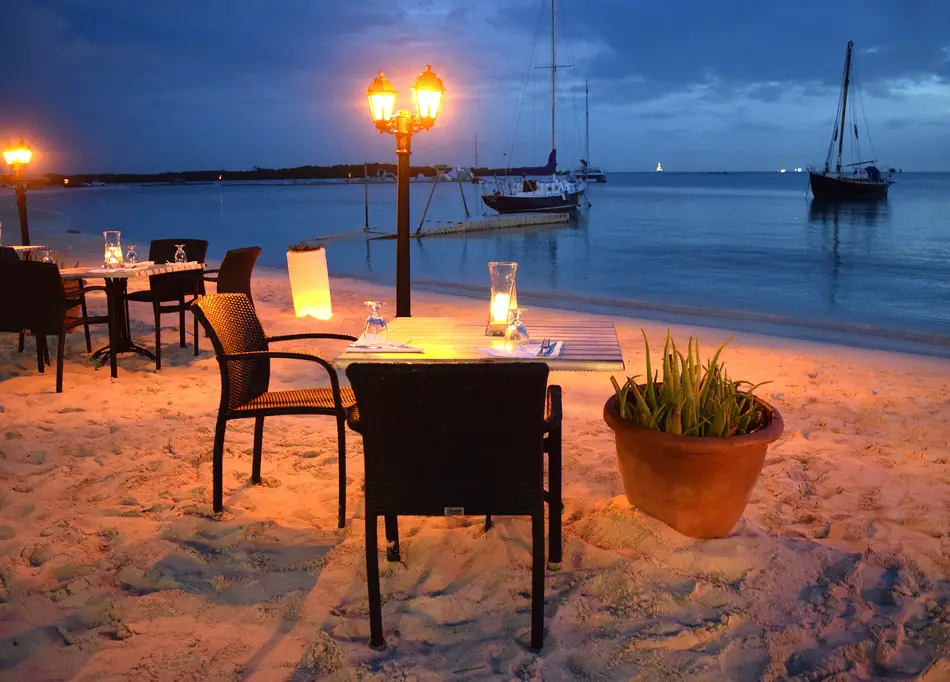
Tipping Tour Guides in Aruba
In Aruba, it is customary for each person to tip about US$10 for a half-day tour and US$20 for a full-day tour.
When is the Best Time to Visit Aruba?
Because Aruba has warm weather year-round and is on the outskirts of the Caribbean hurricane belt, Aruba is a great place to visit any time of the year!
Plus, Aruba hosts numerous events and festivals throughout the year, so there’s always something fun and interesting to do!
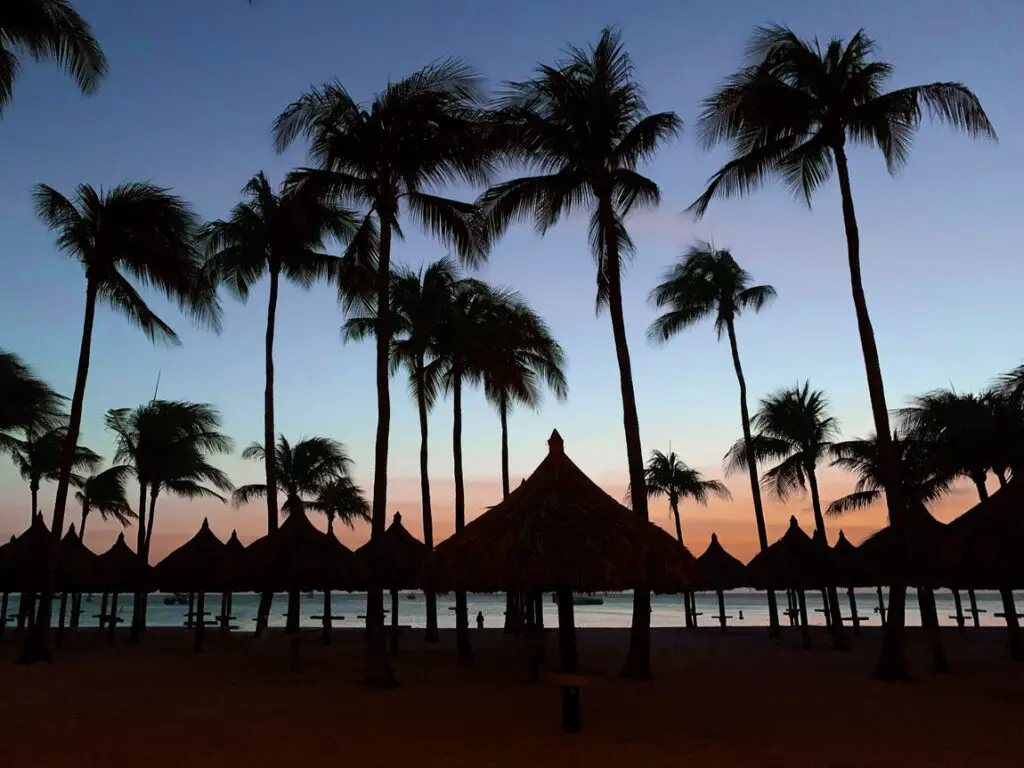
High Season (Mid-December to Mid-April)
Aruba’s high season runs from mid-December to mid-April, when visitors flood to Aruba to escape the cold winter temperatures at home. During the crowded high season, Aruba bustles with activity and abundant entertainment options. The high season also boasts one of Aruba’s most popular and spectacular events—Carnival. Aruba’s Carnival officially starts in November, but most Carnival celebrations and parades occur between January and March.
Despite the many perks of visiting Aruba during the high season, the downside is that hotels are more expensive and get booked up faster. So if you are traveling to Aruba during the high season, make hotel reservations a couple of months in advance.
Low Season (Mid-April to Mid-December)
Aruba’s low season runs from mid-April to mid-December. The perks of visiting Aruba during the low season are that the island is less crowded and hotel rooms are less expensive.
Plus, even though most of the Carnival celebrations occur during the high season, Aruba offers many other great festivals and events during the low season. These events include several cultural festivals held on a recurring basis (like the weekly Bon Boni Festival, the monthly Island Festival, and the monthly Meet San Nicolas street party).
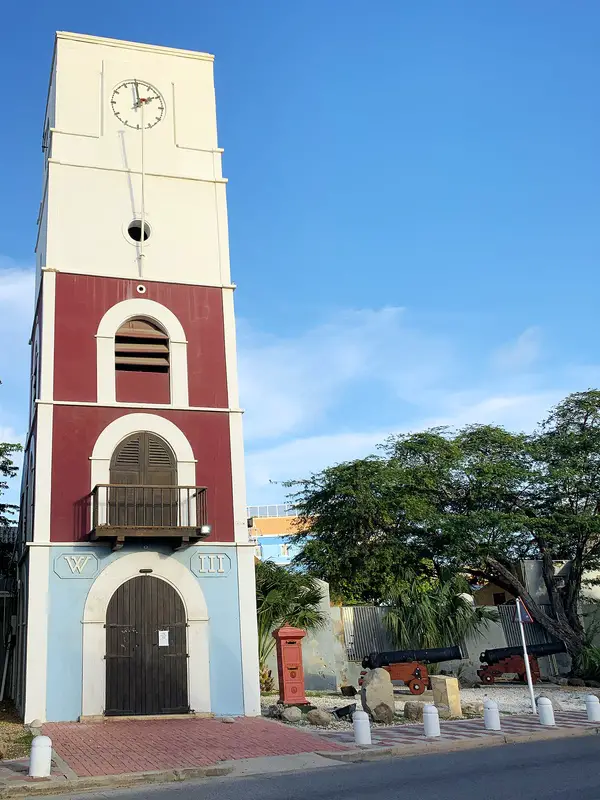
Further, one of the best things about Aruba is that it’s on the southern fringes of the hurricane belt. Because of its location, Aruba is a pretty low-risk place to visit during the Atlantic hurricane season (which officially runs from June 1 to November 30). Although Aruba sometimes experiences tropical weather, hurricanes rarely hit, or even get near, Aruba. So if you’re looking for a Caribbean getaway during hurricane season, Aruba is a great option!
Twilley’s Take on the Best Time to Visit Aruba
Although I would be thrilled to visit Aruba at any time of the year, I think the best time to visit Aruba is during the low season!
I visited Aruba for about a month, from late July to late August, which was during the low season and hurricane season. Although hurricanes were raging in other parts of the Caribbean during my trip, Aruba was unaffected. Except for two days when it rained for a few hours, the weather was sunny every single day during my Aruban getaway. It was hot in Aruba during the day, but strong ocean breezes and swimming in the ocean cooled me off. At night, the temperature was perfect—comfortably cool with no need for a jacket.
My favorite part of visiting Aruba during the low season was the lack of crowds. I loved seeing the beaches, natural pools and bridges, Arikok National Park, and other sites when they were not as crowded with tourists as they would be during the high season. At times, especially in the mornings, it felt like I had the place all to myself! It was perfect!
Best Things to Do in Aruba
1. Beach Hop and Relax on Aruba's World-Famous Beaches
Aruba has so many fantastic beaches, and each is unique. Beach-hopping is a great way to experience Aruba’s many beaches.
Eagle Beach
Take a walk on the soft white sand of the world-famous Eagle Beach, and snap photos of Aruba’s most famous Divi Divi trees.
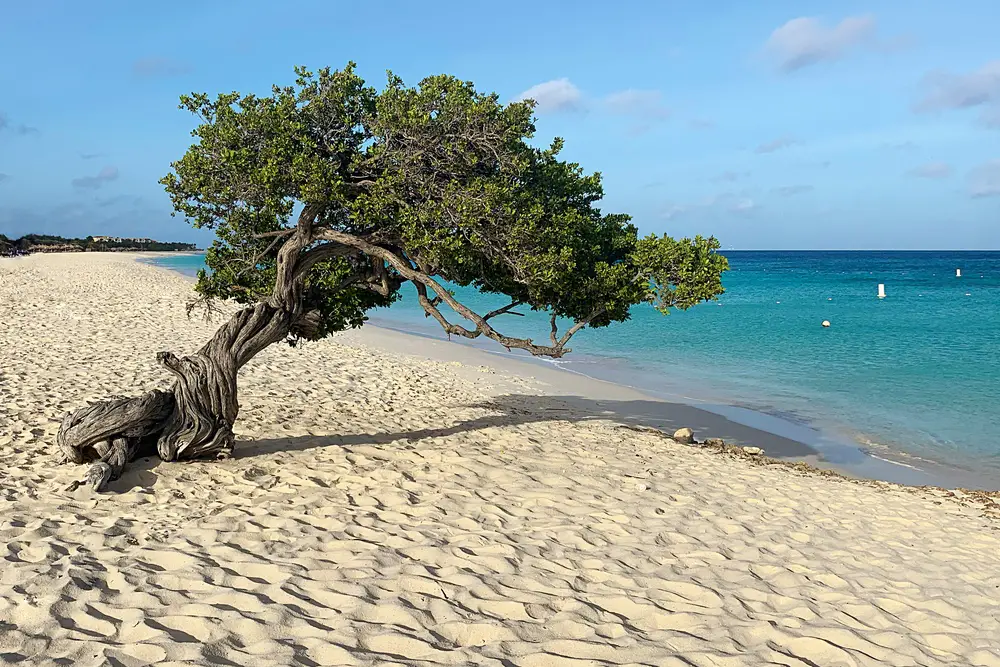
Mangel Halto Beach
Hop in a transparent kayak and explore the mangrove forests around Mangel Halto Beach in Saveneta!
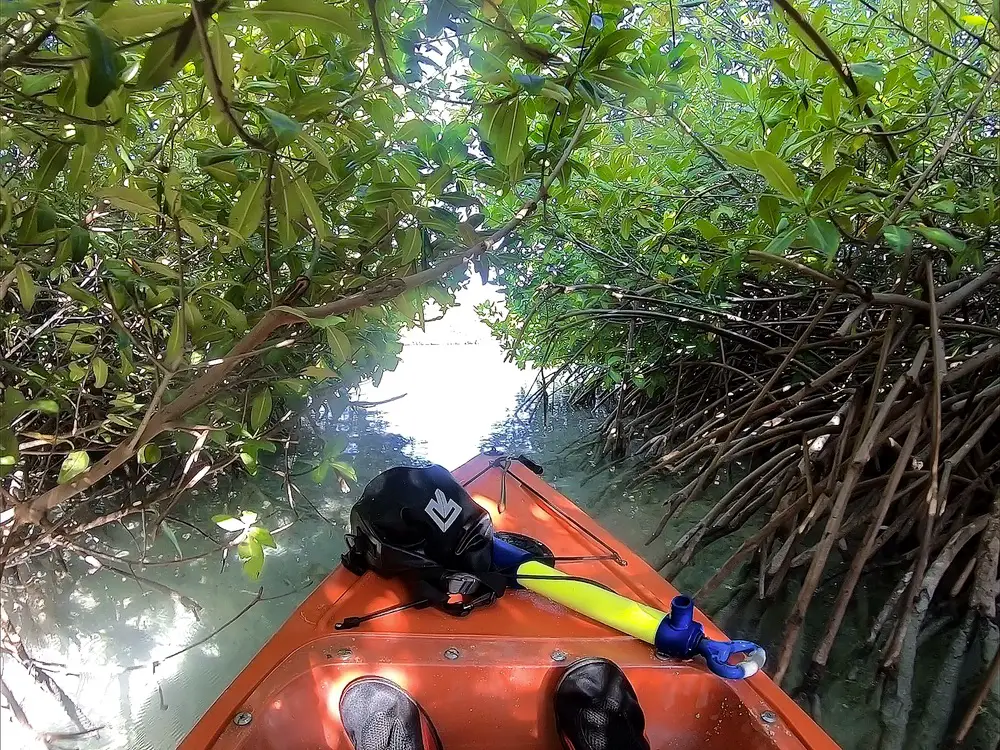
Clear Kayak Aruba offers a fantastic guided “glass bottom” kayaking tour of the mangroves and the area around Mangel Halto Beach. I went on this tour during my visit to Aruba, and I absolutely recommend it!
TWILLEY’S TOP TIP FOR KAYAKING IN THE MANGROVES
In addition to reef-safe sunscreen, remember to wear bug spray because the mosquitos are very active near and inside the mangroves. Mosquitos love me, so I wish I’d known this tip! I was very envious of the long-sleeved Dri-Fit shirt my guide was wearing!
Take a water taxi over to Flamingo Beach on Renaissance Island (a private island owned by the Renaissance Aruba Resort & Casino), where you can feed a flock of flamingos! For everything you need to know about visiting Flamingo Beach and Renaissance Island, check out my blog post on “Flamingo Beach: How to Chill with Flamingos in Aruba!”
2. Experience Downtown Oranjestad
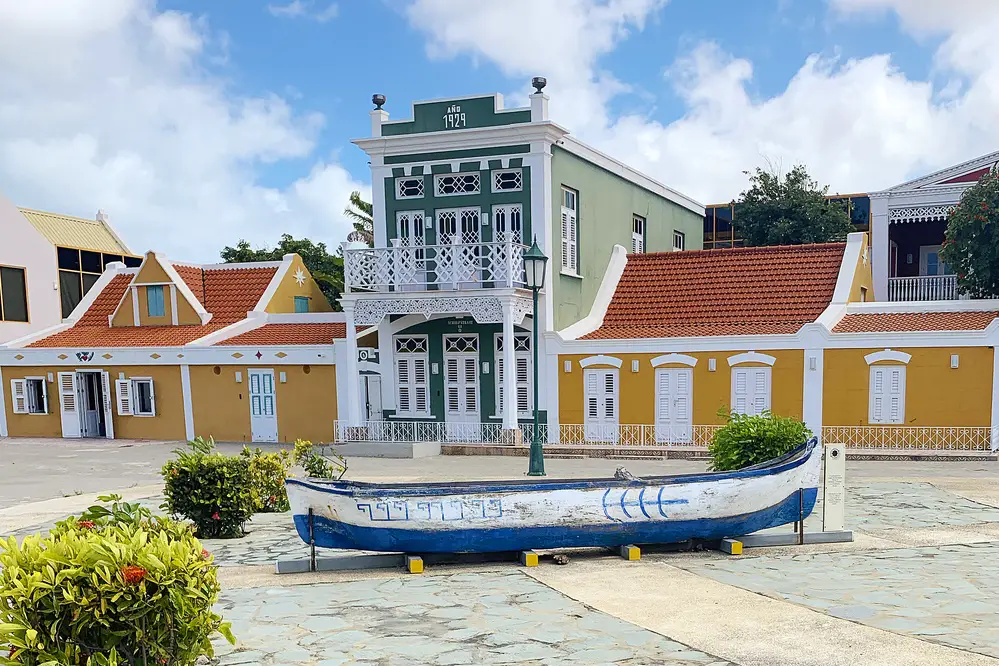
Do some souvenir shopping at the open-air market stalls along the waterfront, Cosecha (a store that sells local arts and crafts), or the Royal Plaza Mall (a large, bubblegum-pink Dutch-style building you can’t miss).
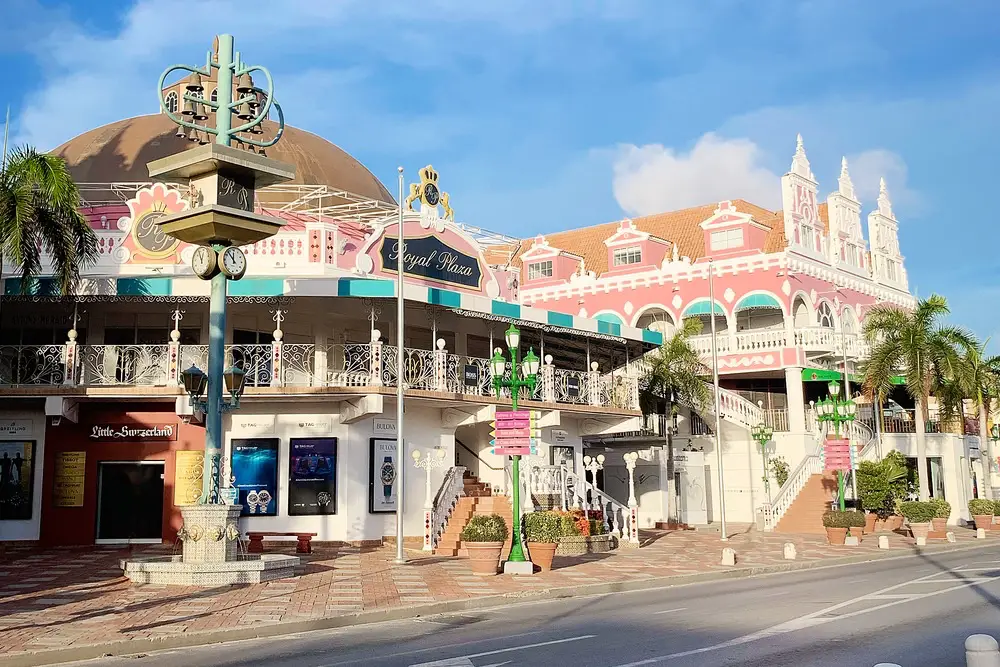
When you get hungry, get a bite to eat at one of Oranjestad’s fantastic restaurants. (My favorites are Bistro de Suikertuin and Cuba’s Cookin’!)
If you’re in Aruba on a Tuesday night, make sure to stop by the weekly Bon Boni Festival, a cultural extravaganza held at Fort Zoutman in downtown Oranjestad.
Then, end the evening at one of Oranjestad’s cool bars, like the Apotheek Speakeasy.
3. Explore Arikok National Park
No trip to Aruba is complete without a visit to Arikok National Park. Extending from the island’s interior to the eastern coast, Arikok National Park covers about 20% of the island and encompasses 7,907 acres of arid wilderness. Inside the park, discover an array of natural wonders, including a secret natural pool, caves, secluded beaches, and Aruba’s tallest peak. There are also several great hiking trails.
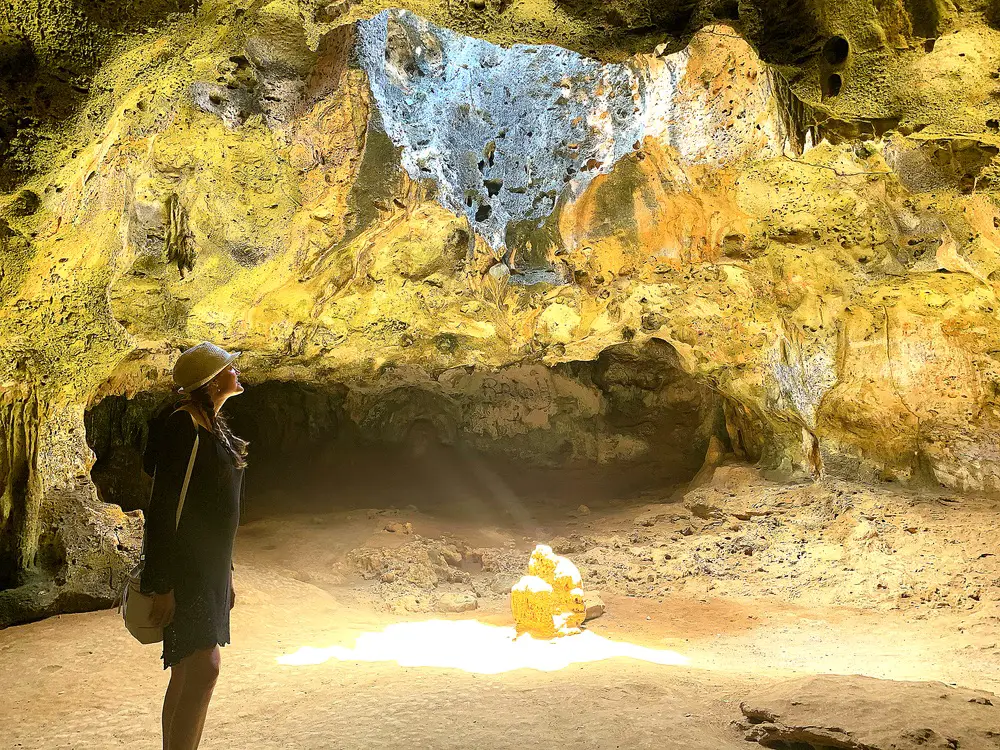
You can explore the park by foot, horseback, ATV, or 4×4 vehicle. Many of the “roads” inside the park are extremely rocky and rugged, so buckle up for a wild ride!
Take a Guided ATV, UTV, or Jeep Tour of Arikok National Park
There are numerous tour companies that offer guided ATV, UTV, or Jeep tours of Arikok National Park, and I absolutely recommend going on one of these tours! When I visited Aruba, I went on an amazing guided UTV tour with RockaBeach Tours, exploring the northwestern and eastern coasts of the island and then venturing into Arikok National Park. There are also several tours that just go to Arikok National Park.
To start planning your off-roading adventure, check out the various Aruba off-roading tours offered on Viator (my go-to site for finding awesome tours)! Below are links to a few highly-rated off-roading tours that venture into Arikok National Park.
Arikok National Park is home to one of my favorite places in Aruba—”Conchi.” Conchi is a breathtaking natural pool surrounded by volcanic rocks. As you swim or snorkel in the calm pool, wild waves crash against the jagged volcanic rocks around you, causing the cool ocean water to burst over the rocks and spray over you. It’s an incredible experience! The “road” to Conchi is rough and requires an all-terrain or 4×4 vehicle, but the trek is absolutely worth it!
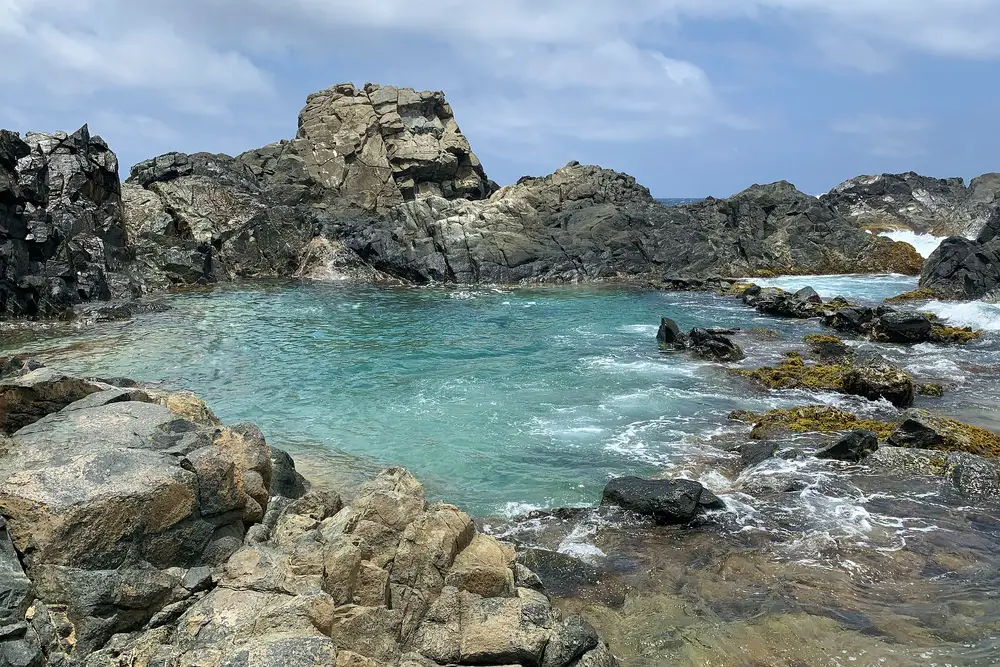
4. Go Scuba Diving and Snorkeling in Aruba
Don your scuba or snorkel gear—or hop on a SEABOB underwater scooter—and dive “under the sea” to explore Aruba’s thriving marine life and fascinating shipwrecks. Aruba’s crystal clear water and fantastic visibility make it a top destination for snorkeling and scuba diving.
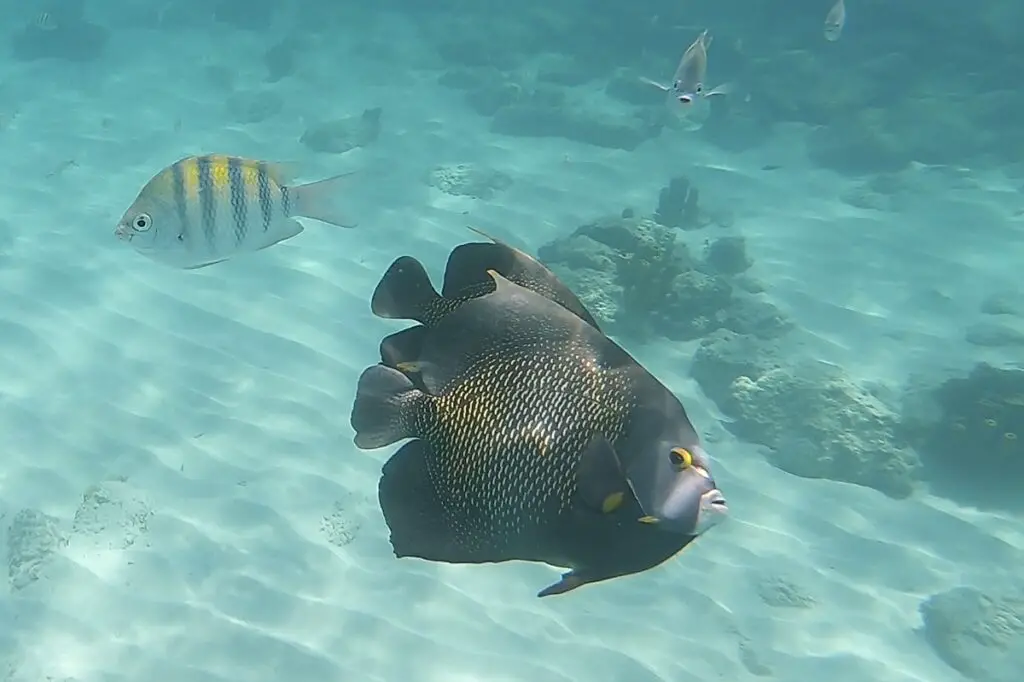
Aruba is known for its incredible wreck diving. Plus, some of Aruba’s wrecks are located right below the surface and can be seen by snorkelers as well!
One of Aruba’s most famous shipwrecks for scuba diving and snorkeling is a German freighter called the Antilla. The Antilla’s captain intentionally sank the ship in the Dutch waters surrounding Aruba in 1940, soon after Germany declared war on the Netherlands. The Antilla lies off the coast of Malmok Beach, and it is a popular stop for diving and snorkeling tours.
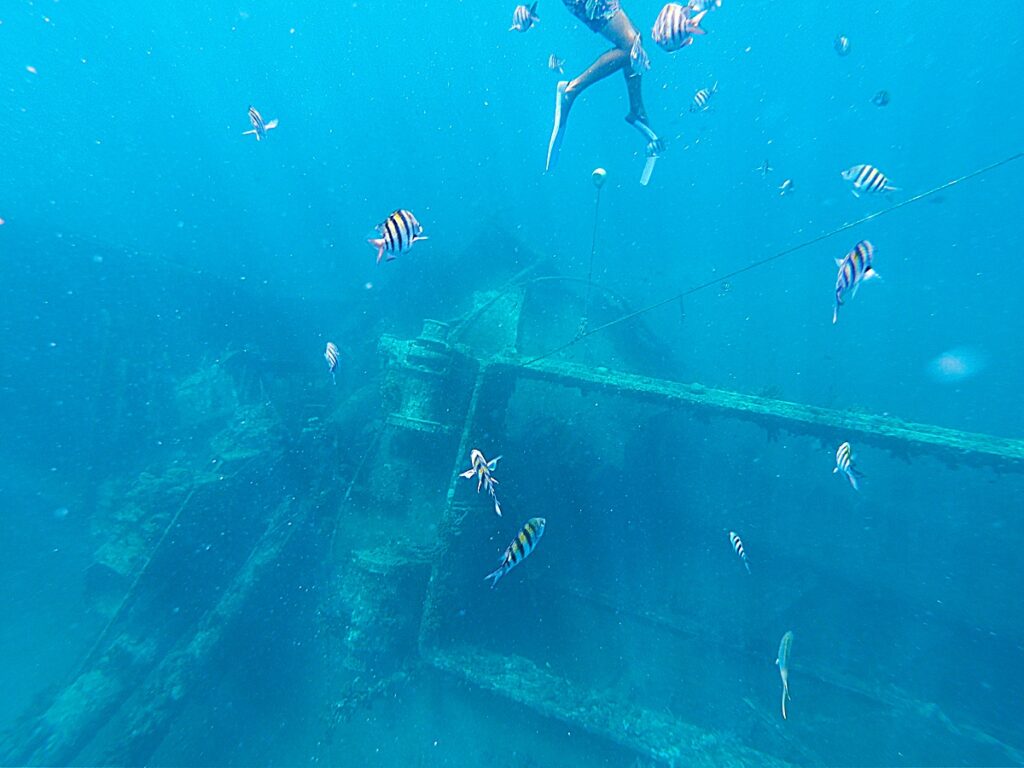
During my visit to Aruba, I went on a two-and-a-half-hour sailing and snorkeling cruise with Aruba Watersports Center. For $50, I spent a delightful morning sailing on a catamaran, sipping rum punch, and snorkeling at the Antilla shipwreck and at Boca Catalina Bay (a popular site for spotting tropical fish). Without a doubt, this sailing and snorkeling cruise was one of the best parts of my trip to Aruba!
Popular SEABOB Excursions
Popular SEABOB Excursions
5. Experience Aruba's Local Food Scene
One of the best parts of visiting Aruba is experiencing the local food scene.
Aruba’s Best Food Experiences
Here are my picks for the top food experiences you just can’t miss when visiting Aruba:
1. Eat Keshi Yena
Eat Keshi Yena (an irresistible Aruban dish consisting of a hollowed-out Gouda cheese rind stuffed with savory meat, vegetables, sauces, and spices) at Bistro de Suikertuin, a quaint local restaurant in Oranjestad.

Bistro de Suikertuin is one of my favorite restaurants in Aruba! I actually ate at Bistro de Suikertuin three times during my trip—for dinner, High Tea, and High Wine. In addition to being delicious, the food was also very reasonably priced by Aruba’s standards.
2. Eat Lunch at Zeerover
Eat lunch at Zeerover, a beloved local spot in Savaneta, where the catch of the day is brought in on fishing boats and then grilled to order. The delicious food and waterfront views are unforgettable.
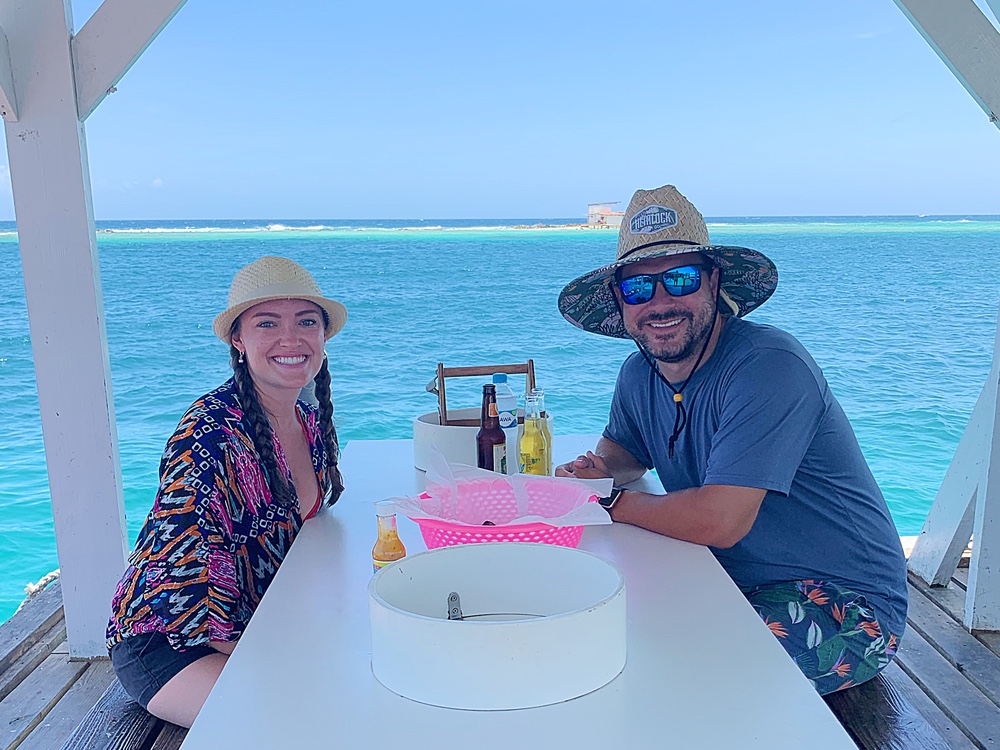
Pour some Hot Delight Papaya Hot Sauce on your grilled seafood, and then wash it all down with a cold, locally-brewed Balashi beer!
My favorite menu items at Zeerover are the grilled shrimp and the fried plantains. I loved Zeerover so much that I actually ate there twice during my trip!
3. Enjoy a Sunset Dinner on the Beach
No visit to Aruba is complete without enjoying dinner on the beach with your toes in the sand (or in the water itself) as you watch a beautiful Aruban sunset!
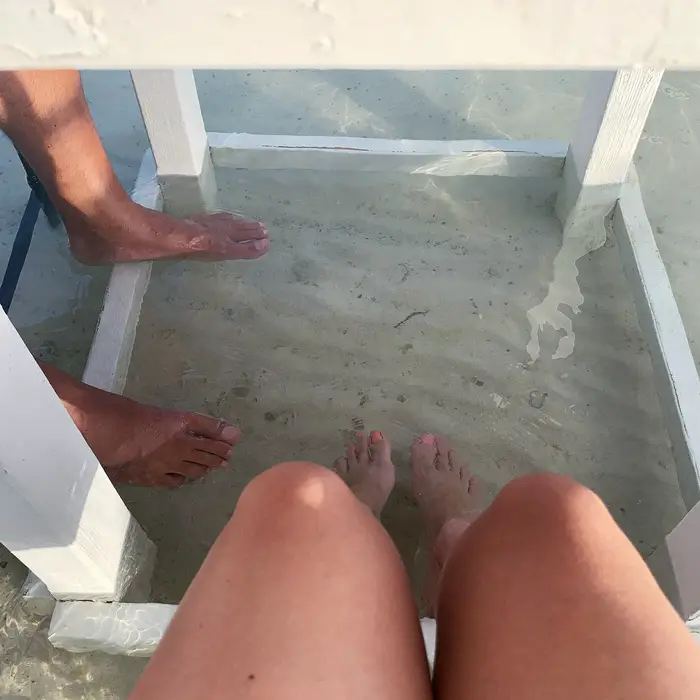
Numerous restaurants in Aruba offer barefoot beach dining. For fine dining in flip-flops, my favorite on-the-beach restaurants are Flying Fishbone in Savaneta and Barefoot Restaurant in Oranjestad!
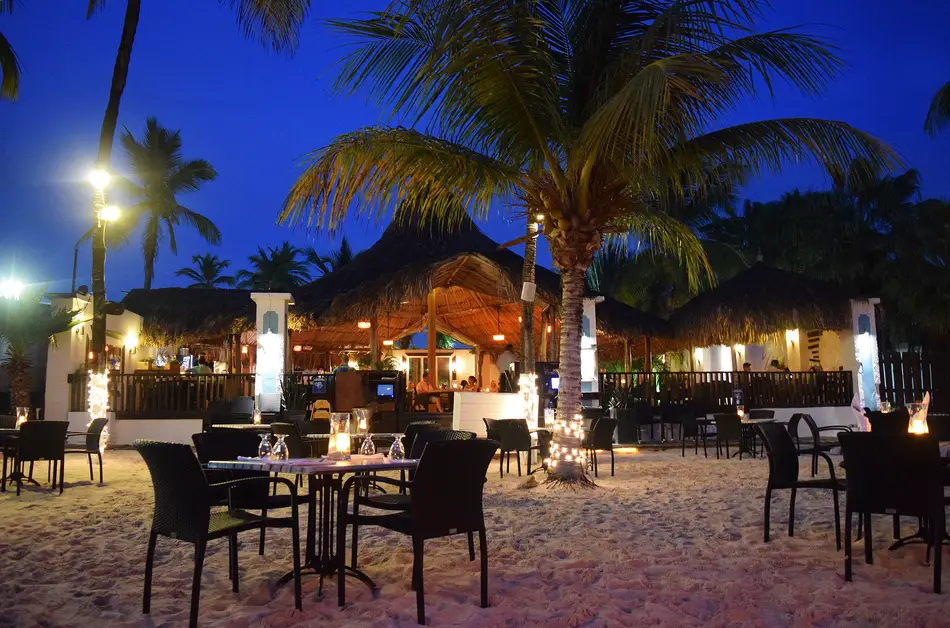
6. Attend Cultural Events and Festivals
While you’re on the island, make sure to attend some of Aruba’s cultural events and festivals.
Carnival is the largest of these celebrations. But there are also several smaller festivals held on a weekly or monthly basis—for example, the weekly Bon Bini Festival (held in Oranjestad on Tuesday nights), the monthly Island Festival (held in San Nicolas on the last Wednesday night of each month), and the monthly Meet San Nicolas street party (held on the first Thursday of each month).
7. Get Your Adrenaline Pumping with Wind Sports
Aruba’s strong winds create the perfect conditions for exhilarating wind sports, like windsurfing, kiteboarding (aka kitesurfing), and blokarting (aka land sailing).
Kiteboarding and Windsurfing
The calm waters and steady winds on Aruba’s southwestern coast are perfect for beginner and intermediate windsurfers and kiteboarders, and lessons are available. Expert windsurfers and kiteboarders looking for a challenge can head over to the beaches on the eastern side of the island (including the popular Boca Grandi and Grapefield beaches), where the waves are intense and the winds are fierce.
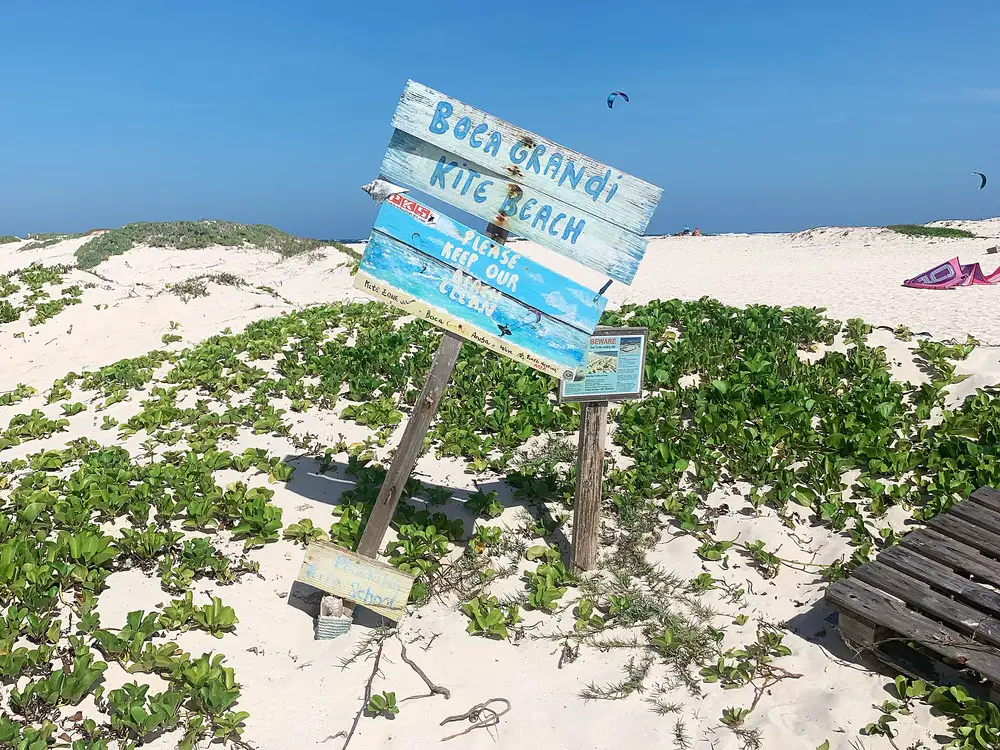
Take Windsurfing or Kiteboarding Lessons in Aruba
Never tried windsurfing or kiteboarding before? Well, you’re in luck because Aruba is a great place to learn! Aruba Active Vacations, a wind sports outfit located on Hadicurari Beach (aka the Fisherman’s Huts), offers private windsurfing lessons and kiteboarding lessons!
Blokarting
If you prefer to stay on land but still want to feel the wind in your sails, then try land sailing in a blokart! A blokart is essentially a wind-powered go-cart attached to a sail. You control your speed using a rope connected to the sail, and you use a handlebar to steer. Zipping along as the wind propels you forward and whipping the blokart around to change directions is a total thrill!
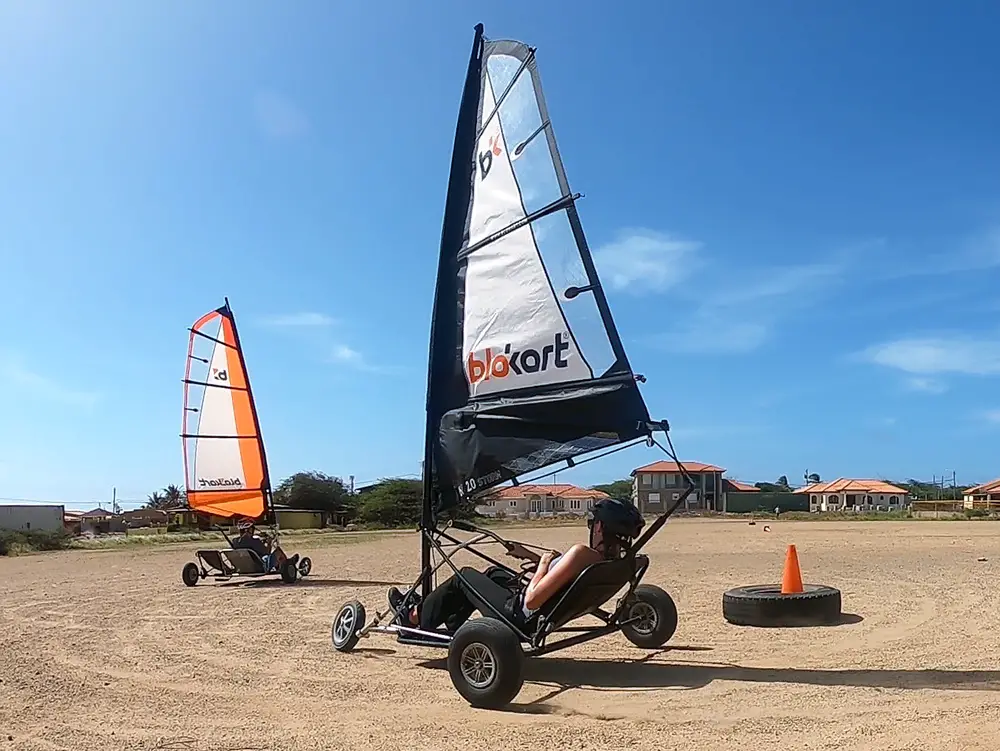
Before visiting Aruba, I had never heard of blokarting. Because I love trying new, unique activities, I decided to give blokarting a try. I booked a blokarting excursion with Aruba Active Vacations and had a great time whipping around in my blokart!
Where to Stay in Aruba
Accommodations in Aruba
When visiting Aruba, your accommodation options include high-rise hotels, low-rise boutique hotels, all-inclusive resorts, time-shares, and condo and villa rentals.
Aruba’s high-rise hotels are concentrated in the bustling Palm Beach area, whereas most of the low-rise boutique hotels are in the more tranquil area stretching from Eagle Beach to Druif Beach. However, there are all-inclusive resorts in both areas.
There are also condo and villa rentals located throughout the island. Conveniently, many condos and villas are only a short walk or drive away from the Palm Beach and Eagle Beach areas.
The Best Areas to Stay in Aruba
There are three main areas where tourists typically stay in Aruba: (1) the Palm Beach area, (2) the Eagle Beach area, and (3) Oranjestad. The best area to stay in Aruba depends on what you are looking for, and each area has advantages.
1. The Palm Beach Area
Palm Beach is a shopping and dining hub, and it’s the most popular area for tourists to stay in Aruba. Tourists favor Palm Beach because of the many restaurants, stores, and nightlife opportunities it offers. Plus, the Palm Beach area is small enough for tourists to explore it on foot without needing a car.
Also, the beach itself is lovely and perfect for taking long walks. With soft sand and crystal-clear water, Palm Beach is a perfect place to people-watch while relaxing in the water with a tropical drink in hand!
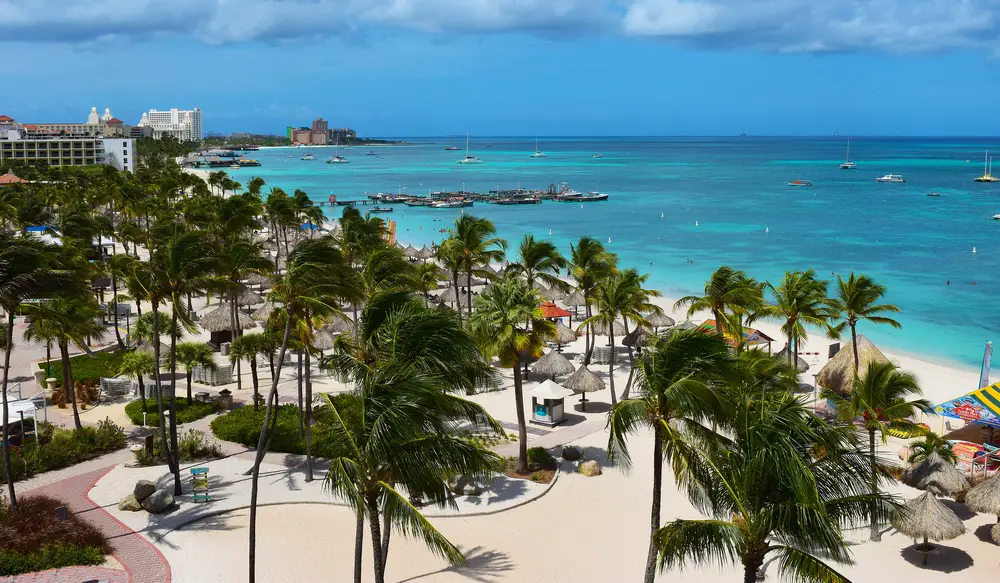
There are also a few boutique hotels and many condos and villas located a short drive away from Palm Beach in the Noord and Malmok Beach areas.
For most of my month-long Aruban getaway, I stayed at an awesome Airbnb in the Gold Coast gated community in Noord. I was working remotely during my visit to Aruba, so it was great having a kitchen and a large workspace. Palm Beach was about a 10-minute drive away from my condo, and it only took 2 or 3 minutes to drive to the nearest beach.
2. The Eagle Beach Area
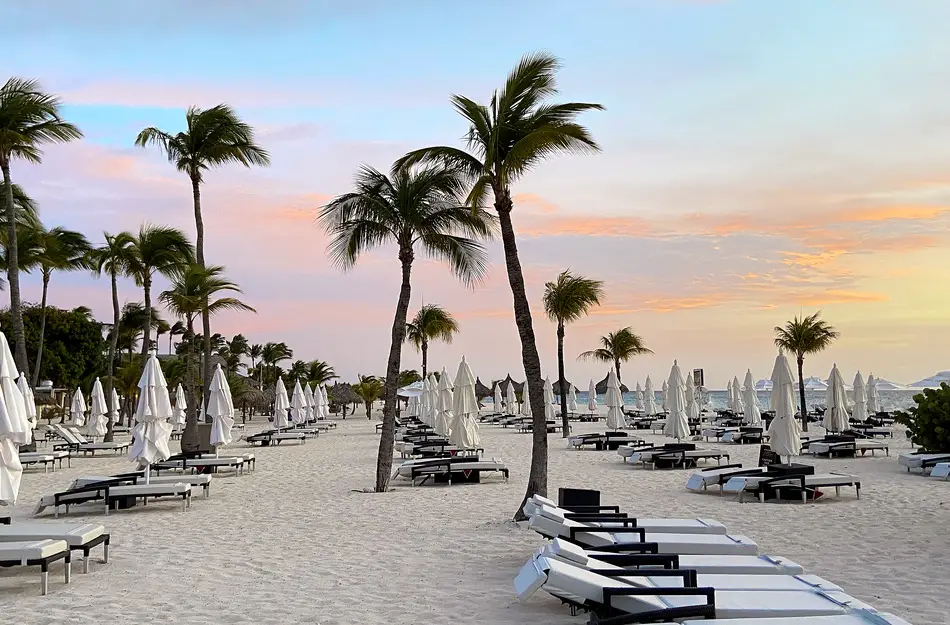
One benefit of staying in the Eagle Beach area is that the beaches there tend to be less crowded than Palm Beach. On top of that, Eagle Beach and Manchebo Beach are two of the loveliest sandy white beaches I’ve ever seen. Plus, of all the spots where I watched the sunset in Aruba, I thought Manchebo Beach was the best!
The Eagle Beach area is only a short distance away from Palm Beach and Oranjestad. So if you want to explore and experience the nightlife in those busier areas, you can always hop in your rental car or take a short taxi ride to Palm Beach or Oranjestad.
3. Oranjestad
Oranjestad, the capital of Aruba, is known for its colorful Dutch Caribbean architecture and the weekly Bon Boni Festival, held on Tuesday nights at Fort Zoutman in downtown Oranjestad. Oranjestad has fantastic dining, shopping, and nightlife options. It’s also where the cruise ships dock.
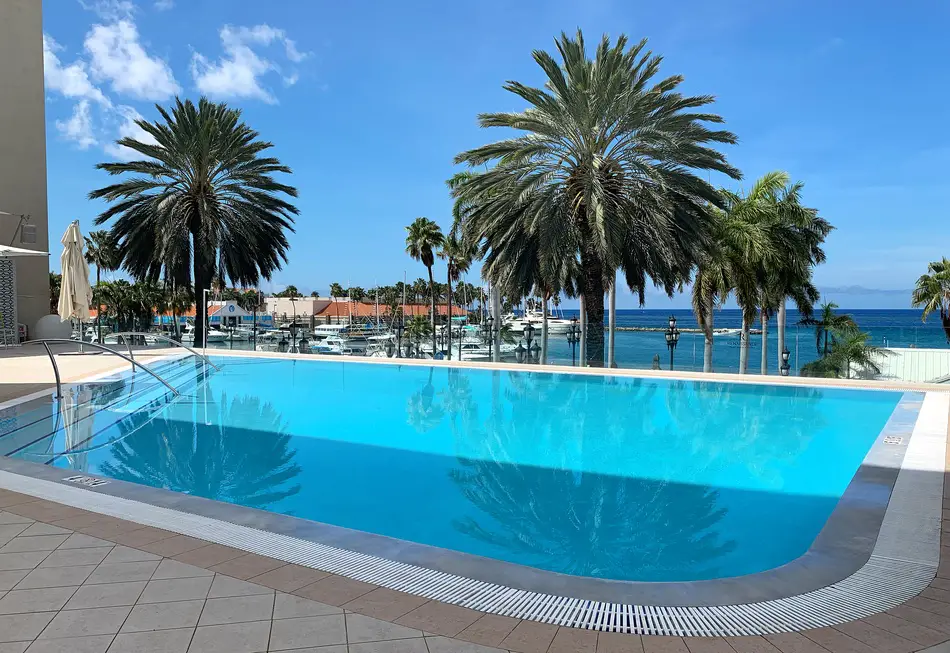
The Renaissance Aruba Resort & Casino is a great place to stay for two reasons:
- First, it’s centrally located beside the Renaissance Marketplace in downtown Oranjestad.
- Second, the guest perks include complimentary access to Renaissance Island (the resort’s private island where Flamingo Beach, which I highly recommend, is located).
Even if you decide to stay in the Palm Beach or Eagle Beach areas for most of your trip, I recommend staying at the Renaissance Aruba Resort & Casino in Oranjestad for at least one night so you can get complimentary access to Renaissance Island.
Getting To and Around Aruba
Getting to Aruba
There are two main ways to get to Aruba: on an airplane or on a cruise ship. International flights arrive at and depart from Aruba’s Queen Beatrix International Airport, located on the outskirts of Oranjestad. The cruise terminal is conveniently located in the heart of downtown Oranjestad.
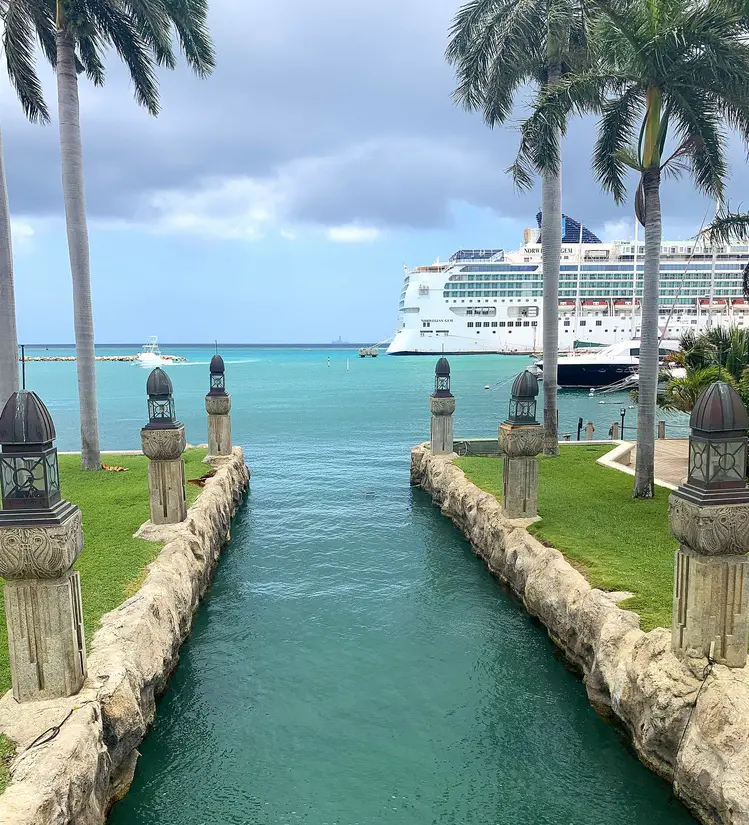
Aruba Transportation
Your transportation options in Aruba include rental vehicles, public buses (also known as “Arubus”), taxis, guided tours with transportation included, the downtown Oranjestad trolley, and bicycles.
For more information about transportation options in Aruba, as well as tips on selecting the right option for you, check out my post titled, “Aruba Transportation: The Ultimate Guide for Getting Around Aruba.”
Driving in Aruba
Basic Rules for Driving in Aruba
- Drive on the Right: Drive on the right side of the road in Aruba, just like in the United States.
- Driver’s License Requirements: If you have a valid U.S. or international driver’s license, you’re allowed to drive in Aruba.
- No Turns on Red: Do not turn right at red lights in Aruba. There aren’t many traffic lights in Aruba, but if you happen to come upon one, don’t turn right on red.
- Intersections: At intersections, vehicles coming from the right have the right of way.
Speed Limits in Aruba
Speed limits in Aruba are in kilometers per hour. In general, the speed limit in and around towns is 30 km/hour, whereas the speed limit outside of towns is usually 60 km/hour.
Aruba Traffic Signs
Traffic signs in Aruba are different from the traffic signs you see in the United States. To familiarize yourself with the different traffic signs and their meanings, check out this helpful list of Aruba Traffic Signs.
Aruba Roundabouts
Aruba has a lot of roundabouts, but you’ll get used to them quickly. Here are a few essential tips for navigating roundabouts in Aruba:
- Right of Way: Vehicles that are already in the roundabout have the right of way.
- No Lane Changing: Don’t try to change lanes inside the roundabout. On the roadway, there are raised lane dividers (about the same height as a small speed bump) that help you stay in the correct lane within the roundabout.
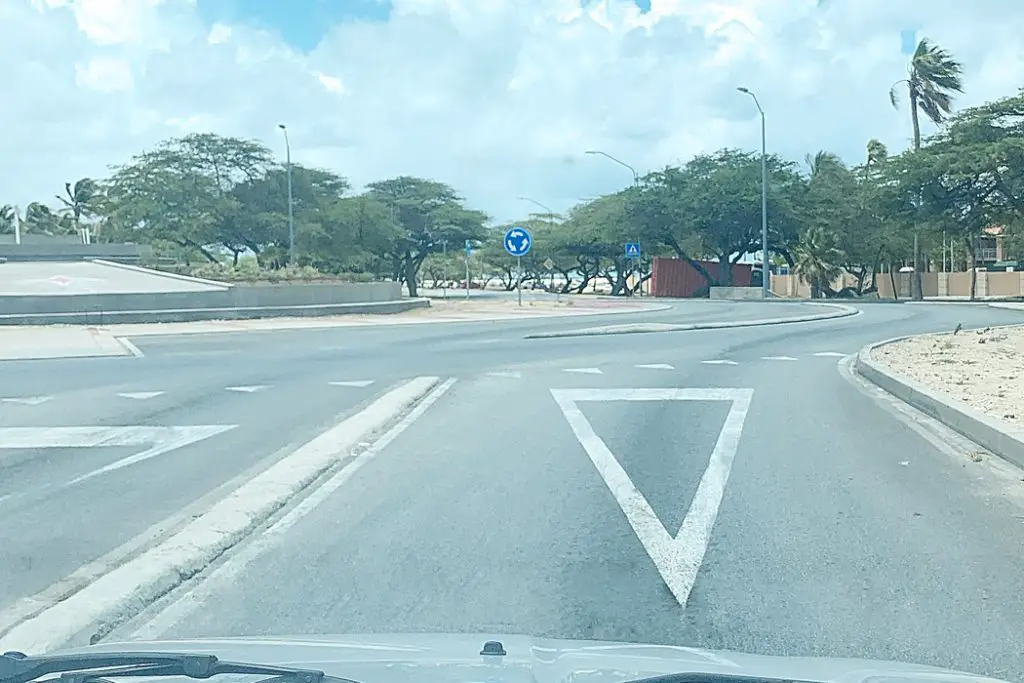
- Images Showing Roundabout Exits: As you approach a roundabout, you will see white images painted on the roadway in each lane. The image shows you where the roundabout exits are for your particular lane.
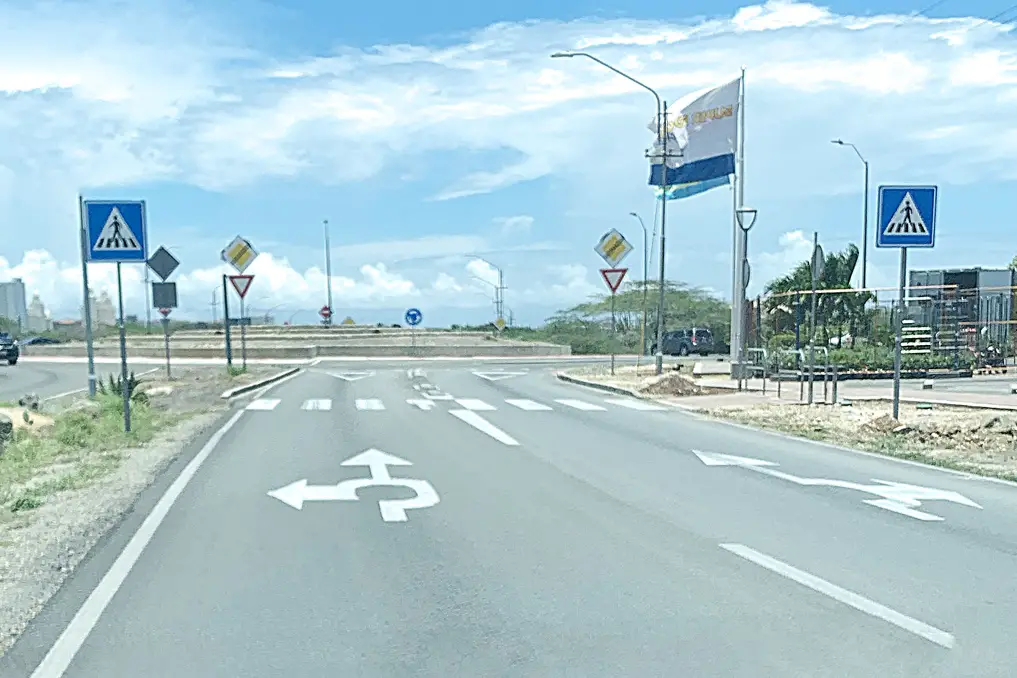
Aruba Road Conditions
The main roads in Aruba are paved and in very good condition. Therefore, you can easily get around most parts of Aruba in a car without four-wheel drive.
However, in more secluded, rugged areas of Aruba (like Arikok National Park, the northern tip of the island, and the eastern coast), the roads are rougher and, in many cases, non-existent. These areas are perfect for an off-roading adventure in an all-terrain vehicle or Jeep with four-wheel drive. But definitely do not drive in these areas in a car (unless you want to get stuck and/or pay a hefty fee for damage to your rental car).
Departing Aruba by Air: U.S. Customs & Border Protection Preclearance
If you are departing Aruba on a U.S.-bound flight, you will have to go through U.S. Customs and Border Protection Preclearance at Queen Beatrix International Airport before departure. When you arrive in the U.S., you will get to skip U.S. Customs and TSA inspections and proceed directly to your connecting flight or final destination.
If you’re bypassing the U.S. altogether and flying directly from Aruba to another international destination besides the U.S., you don’t have to go through U.S. Customs and Border Protection Preclearance in Aruba.
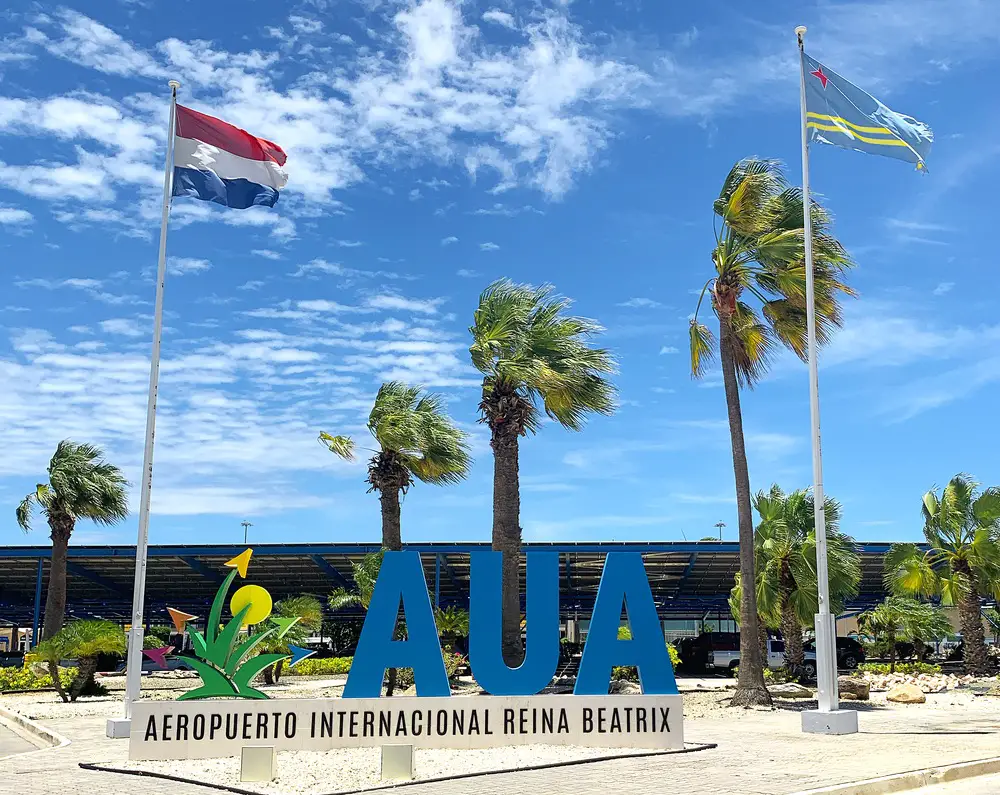
Is it Safe to Travel to Aruba?
Yes! Aruba is generally considered a safe destination for tourists. However, as anywhere, crime does occur in Aruba. So you should use common sense and take normal precautions like you would at home.
Safety Considerations in Aruba
Theft
Most crime against tourists in Aruba involves theft. The most common targets are unattended items left in plain view in public areas (like cars, beaches, etc.). Always lock your rental car, and don’t leave valuables in plain sight.
Remember to keep your passport in a secure place, like a safe. It’s also a good idea to keep an extra copy of your passport in a secure location in case your actual passport gets lost or stolen.
Violent Crime
Violent crime, like armed robbery and sexual assualt, is uncommon in Aruba but does sometimes occur. Therefore, it’s a smart idea to stay in well-lit areas at night and exercise increased caution in more isolated parts of the island.
Bars and Nightclubs
At bars and nightclubs, take normal safety precautions. Drink responsibly, and travel in pairs or groups. Don’t leave your drink unattended, and don’t accept drinks from strangers.
San Nicolas
San Nicolas is a vibrant area known for its colorful murals, monthly festivals (including the Island Festival and Meet San Nicolas street party), and nearby beaches. However, San Nicolas is also known for prostitution, drugs, and car break-ins.
Because there is a higher risk of crime in the San Nicolas area, you should exercise increased caution there, especially at night.

For that reason, it’s smarter to explore San Nicolas during the day. However, if you decide to visit San Nicolas at night, try to go during one of the monthly festivals. These popular festivals attract lots of tourists and locals, and there’s safety in numbers.
Twilley’s Take on Traveling Safely in Aruba
While I was traveling in Aruba, I felt very safe overall. In fact, I had about the same comfort level while traveling in Aruba as I do when I’m in my hometown in the United States.
For part of my Aruba trip, I was traveling solo. As usual, I was more on guard while traveling solo because traveling alone as a woman is riskier than traveling in a group or with a friend. Nevertheless, I still felt very comfortable and safe while traveling alone in Aruba.
During my trip to Aruba, I was aware of my surroundings and took all the safety precautions recommended above. For example:
- I tried not to carry valuables with me (other than my phone, a credit card, a little cash, and, sometimes, my camera).
- If I got into the ocean, I made sure my beach bag was nearby and within my direct view on the beach at all times.
- I always made sure to lock my rental car and keep valuables out of sight.
- Because pepper spray is prohibited in Aruba, I carried my Birdie personal safety alarm on my keychain.
- Because public gatherings were prohibited due to the COVID-19 pandemic, I could not attend any of the nighttime festivals in San Nicolas during my trip. So, instead, I visited San Nicolas during the daytime.
Overall, I felt very safe while visiting Aruba and would definitely recommend Aruba from a safety standpoint.
A Girl’s Best Friend and Travel Buddy
When I’m at home in the United States, I always carry pepper spray on my keychain. However, in many countries (including Aruba), pepper spray is prohibited.
Luckily, there’s Birdie—a slim, lightweight, easy-to-hold personal safety alarm designed to deter potential attackers. Pulling out the circular pin activates Birdie’s shrill siren and flashing light, creating a diversion. My Birdie makes me feel safer when I’m on my own (whether I’m in my hometown or traveling).
Birdie is the travel buddy every woman needs!
Plus, Birdie comes in a variety of fun colors to suit your personal style.
I love my Birdie so much that I also bought Birdies for my mom, sister, and preteen nieces! I believe Birdie is one of the best gifts you can buy for yourself and the women and girls in your life.
Get 10% off your Birdie order when you use my Brand Ambassador Discount Code—TRAVELINGTWILLEY10—at checkout!
Emergency Telephone Numbers in Aruba
- Police: In case of an emergency, call 100 for police assistance in Aruba.
- Emergency Medical Assistance: Call 911 for emergency medical assistance in Aruba.
- Fire Department: Call 911 for the fire department in Aruba.
- The U.S. Consulate General in Curaçao: There is no U.S. Embassy in Aruba. However, there is a U.S. Consulate General in Curaçao. The regular telephone number for the U.S. Consulate General in Curaçao is +(599)-(9)-461-3066, and the emergency telephone number is +(599)-(9)-510-6870. The U.S. Department of State recommends contacting the U.S. Consulate General in Curaçao after contacting the Aruban police.
Twilley’s Travel Tip: Visit the U.S. Department of State’s Website
The U.S. Department of State’s website provides up-to-date information on safety and other issues related to traveling to Aruba. When planning an international trip, I always visit the U.S. Department of State’s website to get current information on safety, local laws, and travel advisories. Check out the U.S. Department of State’s Aruba International Travel Information webpage for more advice and insight.
Solo Female Travel in Aruba
Aruba is a fantastic destination for solo female travelers! When I’m brainstorming destinations for a solo trip, I have two main considerations. First, is it safe for me to travel there alone as a woman? Second, are there enough fun and interesting things for me to do there without a travel buddy? For Aruba, the answer to both questions is “yes!”
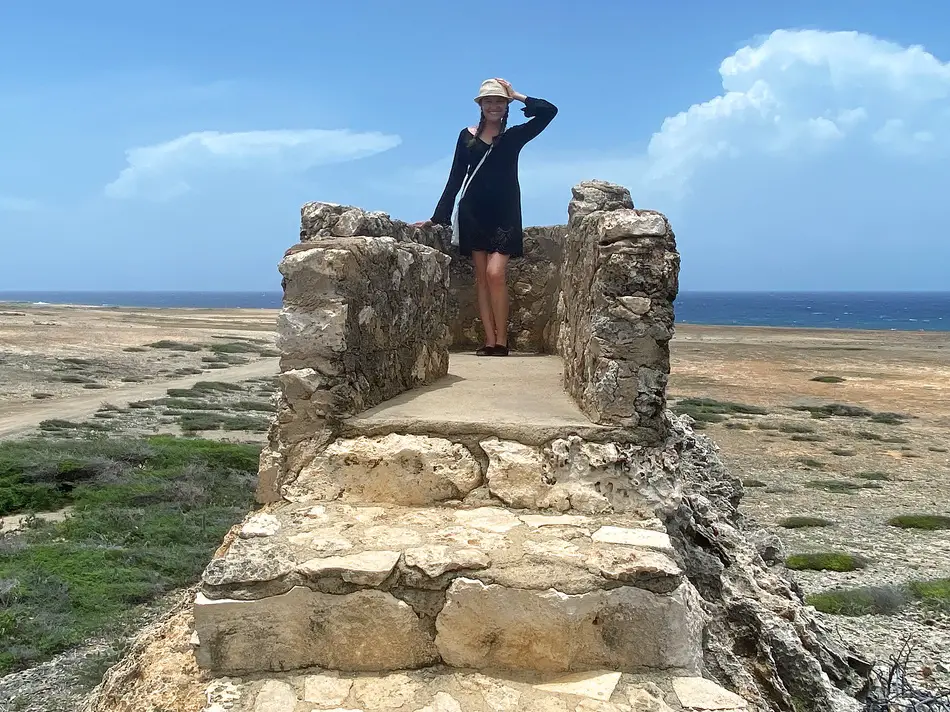
Enjoy this article?
Pin it for later!
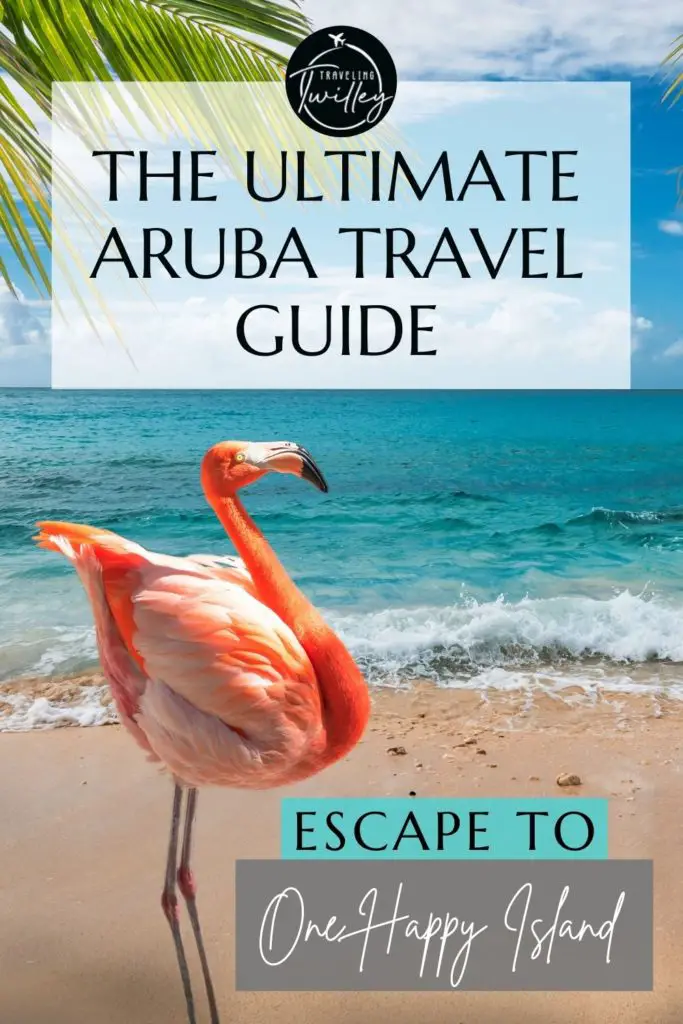
And share it on Facebook and Twitter!
Stay Connected
Sign up to receive updates on new blog posts, giveaways, and more!
Affiliate Disclaimer: This article may contain affiliate links. If you click an affiliate link and make a purchase, I earn a small commission at no additional cost to you. Also, as an Amazon Associate, I earn from qualifying purchases. For full information, please see the disclaimer.
More Aruba Posts
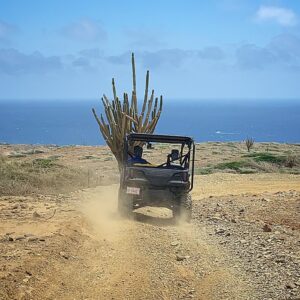
Driving in Aruba: Everything You Need to Know
Driving in Aruba is the best way to explore the island. It’s easy and convenient and gives you the freedom to explore the entire island at your own pace. This post has all the tips you need to know for driving in Aruba!
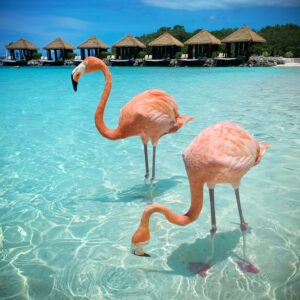
The 6 Most Exciting Activities For Animal-Lovers in Aruba
If you’re an animal-lover planning a getaway to Aruba, you’re in luck because Aruba offers fantastic activities for animal-loving travelers! Find out my picks for the six best animal-related activities in Aruba!
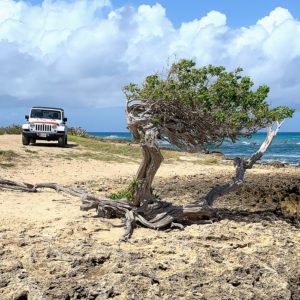
Aruba Transportation: The Ultimate Guide for Getting Around Aruba
Wondering how to get around Aruba? This post covers everything you need to know about your Aruba transportation options, including rental vehicles, taxis, the downtown trolley, and more!
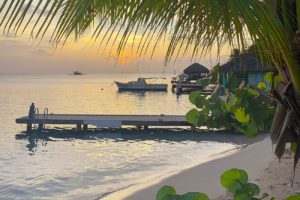
21 Photos That Will Inspire You to Visit Aruba
With its gorgeous beaches, colorful Dutch Caribbean architecture, and incredible food scene, Aruba is a tropical paradise that should be on everyone’s bucket list. Here are 21 photos to inspire you to plan your own Aruban getaway!

The Best Local Food in Aruba: 15 Authentic Aruban Foods and 5 Local Drinks to Try
Want to eat and drink like a local in Aruba? Check out my post on the best local foods and drinks to try in Aruba (including keshi yena, the Aruba Ariba, and more)!
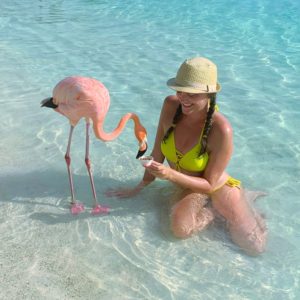
Flamingo Beach: How to Chill With Flamingos in Aruba
Wondering how to visit Flamingo Beach and spend the day chillin’ with flamingos in Aruba? Discover my best tips for an unforgettable day at Aruba’s famous Flamingo Beach!
Stay Connected
Sign up to receive updates on new blog posts, giveaways, and more!

